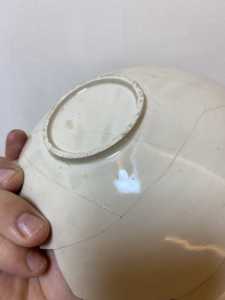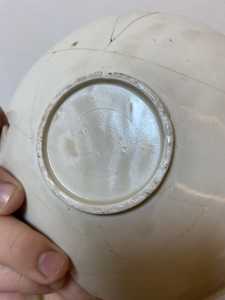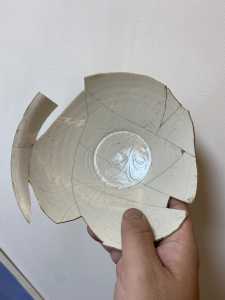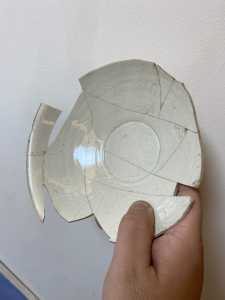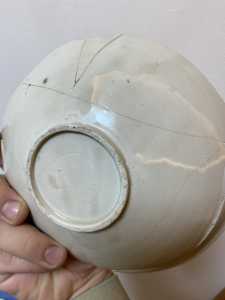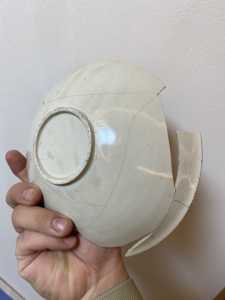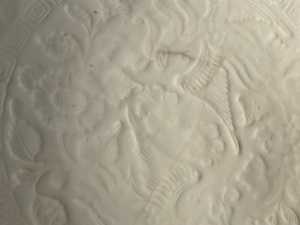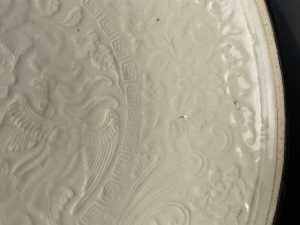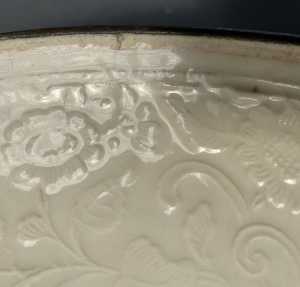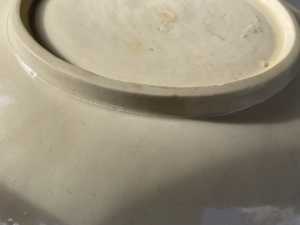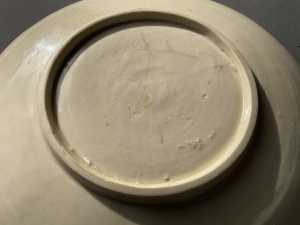The Chinese and Asian Art Forum. For Fans, Collectors and Dealers.
 Basic Rules For the BidAmount Asian Art Forum: Talk about whatever you want. You can even discuss and offer things that are for sale if they are authentic. Maximum image file size per post is 2 MB. Images of 700pxl x 700pxl are optimal if saved at a medium resolution. Be respectful of others and enjoy yourself. Click the YouTube link for a brief tutorial on using the forum. You can also EMBED Videos by cutting and pasting from You-Tube, Vimeo etc.
Basic Rules For the BidAmount Asian Art Forum: Talk about whatever you want. You can even discuss and offer things that are for sale if they are authentic. Maximum image file size per post is 2 MB. Images of 700pxl x 700pxl are optimal if saved at a medium resolution. Be respectful of others and enjoy yourself. Click the YouTube link for a brief tutorial on using the forum. You can also EMBED Videos by cutting and pasting from You-Tube, Vimeo etc.
NOTE: To post an item or add a new post, click open the category title from the FORUM LIST, and CLICK the Blue ADD TOPIC button.
the song wares of five famous kilns (Ding Ru Guan Ge Jun), together with Longquan, Jizhou, Yaozhou, Jianyang, are now massively reproduced now in China. Potters of replica kilns's technique and achievement are now beyond most of people's imagination. Be very careful.
@johnshoe this is what i call high-fakes (replica that need scrutiny and experience). sorry
here is one specimen of mine for your comparison, notice the hue of glaze:
We are having a partly cloudy day, but here are some additional outside photos. I should mention there is some noticeable wear to the glaze at the high spots of the moulded design in the center of the bowl. This makes sense to me if the bowl was used as a food vessel at some time.
using phone to check your photos nearly led to mistake.
Your phoenix bowl is not Ding but Jingdezhen ware that imitated Ding during Song to favor market taste. It is genuine.
We are having a partly cloudy day, but here are some additional outside photos. I should mention there is some noticeable wear to the glaze at the high spots of the moulded design in the center of the bowl. This makes sense to me if the bowl was used as a food vessel at some time.
Are you able to elaborate on the differences you see, please? I find this very interesting.
Like Julia, I would be happy to learn more about why my piece didn’t originate at the Ding kilns. Was it a different paste, different construction technique, or different type of glaze used at the Jingdezhen site? I am intrigued.
purely statistical reason
jingdezhen bowl has such phoenix impression pattern;ding does not.
also base morphology.
experience does all
Like Julia, I would be happy to learn more about why my piece didn’t originate at the Ding kilns. Was it a different paste, different construction technique, or different type of glaze used at the Jingdezhen site? I am intrigued.
Thank you! Your response inspired me to go check my reference works on Song Ceramics and Qingbai wares from Jingdezhen. It was all laid out clearly for me to understand the origins of my dish in the Southern Song period. I found very similar decorative examples on some examples in the Percival David collection and also in the National Palace Museum, Taiwan. All of them, including mine had moulded phoenixes with long tails, set against a background of blossoms & leaves and with a Greek key pattern delimitating the decorative fields. They also talked about lower foot rims (Southern Song) vs. higher foot rims (Nothern Song).
There was a term used in A Survey of Chinese Ceramics, Sung Wares by Liu Liang-yu to describe my dish that was not explained very well. Have you heard of the term ‘Powder Ting’?
I found close examples of my dish in Qingbai Ware, Chinese Porcelain of the Song and Yuan Dynasties by Rosemary Scott, Amy Barnes, Estela Nikles, & Catherine Teo; edited by Stacey Pierson.
All in all, it has been a great learning experience.
hi, William!
It is always a great pleasure to witness someone who is seriously studying Chinese ceramics history and, as a collector carry out systematic comparison of a specific authentic item.
Let me introduce myself first: I am the translator of Colors of Chinese Ceramics, and Patterns of Chinese Ceramics (American Academic Press, 2022). This is the publication sponsored by Chinese Social Science Fund. And i have been collecting and studying sherds and complete pieces of Song and Tang and Yuan for more than 15 years. I own more than 5000 specimens of the eight major kiln's of Song Dynasty (Ru, Guan, Ge, Jun, Ding, Yaozhou, Jizhou, Longquan, Jian) and Jingdehzne wares. I also have extensive dialog and constant interaction with dealers home and abroad.
To say all the above, is to answer your question with a background.
Honestly, the quoted books you mentioned all made contribution of a kind to study of Chinese ceramics. However, due to their lack of direct contact of what is happening in recent 20 years of Chinese ceramics study and collection alive, their publication often contain incorrect or at least obscure or partial understanding in theory and practice. Fro example, you mentioned high foot-northern song, low foot-southern song. But in fact, the situation is far more complex than that.
As i said, experience does all. I know Southern Ding (Jingdezhen wares imitating Ding wares) through actual pieces, most of which are sherds. Their difference from the Northern Ding, as i planned only talk in private as this is my own intellectual property, for example, is more like this: 1. southern Ding glaze more often cracks. 2. Southern Ding's unlgaze rim often has slight orange hue (we call "huo shi hong" as common in all Jingdezhen wares). 3. most importantly, Southern Ding impression patterns have their own style and examples that are easily recognizable and distinct of their own, if you have seen them for 1000 times or 500 times. 4. as a secret, let me tell you Northern Ding bowls nearly all have a feature on the bottom of their foot rim: a kind of wrinkle due to attachment when cooling before put into kiln and after glazing stage on a shelf or board. This phenomenon is restricted to up firing ones, not the inverted (up side down)firing ones. There are more reasons.
So far.
Perhaps we need to build some private contact?
Thank you! Your response inspired me to go check my reference works on Song Ceramics and Qingbai wares from Jingdezhen. It was all laid out clearly for me to understand the origins of my dish in the Southern Song period. I found very similar decorative examples on some examples in the Percival David collection and also in the National Palace Museum, Taiwan. All of them, including mine had moulded phoenixes with long tails, set against a background of blossoms & leaves and with a Greek key pattern delimitating the decorative fields. They also talked about lower foot rims (Southern Song) vs. higher foot rims (Nothern Song).
There was a term used in A Survey of Chinese Ceramics, Sung Wares by Liu Liang-yu to describe my dish that was not explained very well. Have you heard of the term ‘Powder Ting’?
I found close examples of my dish in Qingbai Ware, Chinese Porcelain of the Song and Yuan Dynasties by Rosemary Scott, Amy Barnes, Estela Nikles, & Catherine Teo; edited by Stacey Pierson.
All in all, it has been a great learning experience.
what i say about restricted to up firing ones is still partly incorrect.
complex
quote data-userid="137" data-postid="84879"]
hi, William!
It is always a great pleasure to witness someone who is seriously studying Chinese ceramics history and, as a collector carry out systematic comparison of a specific authentic item.
Let me introduce myself first: I am the translator of Colors of Chinese Ceramics, and Patterns of Chinese Ceramics (American Academic Press, 2022). This is the publication sponsored by Chinese Social Science Fund. And i have been collecting and studying sherds and complete pieces of Song and Tang and Yuan for more than 15 years. I own more than 5000 specimens of the eight major kiln's of Song Dynasty (Ru, Guan, Ge, Jun, Ding, Yaozhou, Jizhou, Longquan, Jian) and Jingdehzne wares. I also have extensive dialog and constant interaction with dealers home and abroad.
To say all the above, is to answer your question with a background.
Honestly, the quoted books you mentioned all made contribution of a kind to study of Chinese ceramics. However, due to their lack of direct contact of what is happening in recent 20 years of Chinese ceramics study and collection alive, their publication often contain incorrect or at least obscure or partial understanding in theory and practice. Fro example, you mentioned high foot-northern song, low foot-southern song. But in fact, the situation is far more complex than that.
As i said, experience does all. I know Southern Ding (Jingdezhen wares imitating Ding wares) through actual pieces, most of which are sherds. Their difference from the Northern Ding, as i planned only talk in private as this is my own intellectual property, for example, is more like this: 1. southern Ding glaze more often cracks. 2. Southern Ding's unlgaze rim often has slight orange hue (we call "huo shi hong" as common in all Jingdezhen wares). 3. most importantly, Southern Ding impression patterns have their own style and examples that are easily recognizable and distinct of their own, if you have seen them for 1000 times or 500 times. 4. as a secret, let me tell you Northern Ding bowls nearly all have a feature on the bottom of their foot rim: a kind of wrinkle due to attachment when cooling before put into kiln and after glazing stage on a shelf or board. This phenomenon is restricted to up firing ones, not the inverted (up side down)firing ones. There are more reasons.
So far.
Perhaps we need to build some private contact?
Thank you! Your response inspired me to go check my reference works on Song Ceramics and Qingbai wares from Jingdezhen. It was all laid out clearly for me to understand the origins of my dish in the Southern Song period. I found very similar decorative examples on some examples in the Percival David collection and also in the National Palace Museum, Taiwan. All of them, including mine had moulded phoenixes with long tails, set against a background of blossoms & leaves and with a Greek key pattern delimitating the decorative fields. They also talked about lower foot rims (Southern Song) vs. higher foot rims (Nothern Song).
There was a term used in A Survey of Chinese Ceramics, Sung Wares by Liu Liang-yu to describe my dish that was not explained very well. Have you heard of the term ‘Powder Ting’?
I found close examples of my dish in Qingbai Ware, Chinese Porcelain of the Song and Yuan Dynasties by Rosemary Scott, Amy Barnes, Estela Nikles, & Catherine Teo; edited by Stacey Pierson.
All in all, it has been a great learning experience.
I can certainly understand there might be times where you might wish to communicate with me on a less public venue.
My email address is [email protected]
I think many of us would like to be part of that. As someone who is trying to build a collection of older wares, I find this extremely interesting.
@jiawei-he I would also appreciate the opportunity to participate in email communication if possible. Mine is [email protected]
Cheers!
i have sent you an email from my qq mail.
Thank you! Your response inspired me to go check my reference works on Song Ceramics and Qingbai wares from Jingdezhen. It was all laid out clearly for me to understand the origins of my dish in the Southern Song period. I found very similar decorative examples on some examples in the Percival David collection and also in the National Palace Museum, Taiwan. All of them, including mine had moulded phoenixes with long tails, set against a background of blossoms & leaves and with a Greek key pattern delimitating the decorative fields. They also talked about lower foot rims (Southern Song) vs. higher foot rims (Nothern Song).
There was a term used in A Survey of Chinese Ceramics, Sung Wares by Liu Liang-yu to describe my dish that was not explained very well. Have you heard of the term ‘Powder Ting’?
I found close examples of my dish in Qingbai Ware, Chinese Porcelain of the Song and Yuan Dynasties by Rosemary Scott, Amy Barnes, Estela Nikles, & Catherine Teo; edited by Stacey Pierson.
All in all, it has been a great learning experience.
Thanks for visiting "The BidAmount Asian Art Forum | Chinese Art"
If you sell on eBay, or have a shop feel free to post images and descriptions and links.
Check back often for discussion about the latest news in the Chinese art and antique world. Also find out about the latest Asian art auctions at Sotheby's, Christie's, Bonhams and Tajans.
Auction results for: fine porcelain, ceramics, bronze, jade, textiles and scholar's objects. As well as Japanese, Thai, Vietnamese and other Asian cultures.
Thank you,
Peter Combs
Topics and categories on The BidAmount Asian Art Forum | Chinese Art
Kangxi vases, Kangxi dishes and chargers, Kangxi ritual pieces, Kangxi scholar's objects, Qianlong famille rose, Qianlong enamels, Qianlong period paintings, Qianlong Emporer's court, Fine porcelain of the Yongzheng period. Chinese imperial art, Ming porcelain including Jiajing, Wanli, Xuande, Chenghua as well as Ming jades and bronzes.
The BidAmount Asian Art Forum | Chinese Art
A free Asian art discussion board and Asian art message board for dealers and collectors of art and antiques from China, Japan, Korea, Thailand, Cambodia, Vietnam and the rest of Asia. Linked to all of the BidAmount Asian art reference areas, with videos from plcombs Asian Art and Bidamount on YouTube. Sign up also for the weekly BidAmount newsletter and catalogs of active eBay listing of Chinese porcelain, bronze, jades, robes, and paintings.
The art of calligraphy - and for the ancient Chinese it certainly was an art - aimed to demonstrate superior control and skill using brush and ink. Calligraphy established itself as one of the major Chinese art forms during the Han dynasty (206 BCE - 220 CE), and for two millennia after, all educated men were expected to be proficient at it.
The Museum’s collections of Asian art span nearly five millennia and encompass the cultures of China, the Himalayas, India, Japan, Korea, and Southeast Asia. In 2007, the Museum launched an initiative to create dedicated galleries for the collection, beginning with a gallery for the arts of Korea ...
Chinese art is full of symbolism, in that artists typically seek to depict some aspect of a totality of which they are intuitively aware.
China Online Museum is the finest online museum of Chinese art. It features Chinese calligraphy, painting, ceramics, bronzes, carving, and other artworks.
Chinese Ceramics & Works of Art. Overview Upcoming auctions Contacts Auction results ... Christie’s sales of Chinese ceramics and works of art showcase centuries of Chinese history. Held throughout the year in London, New York, Paris and Hong Kong, they attract a wide audience of collectors and connoisseurs vying for pieces as diverse as ...
Explore Asian Art Week. Contact the Specialist Department. Chinese Paintings ... Senior Specialist, Head of Sale. [email protected]. Tel:+1 212 641 5760. Bid in-person or online for the upcoming auction:Fine Chinese Paintings on 10 September 2019 at New York. Bid in-person or online for the upcoming auction:Fine Chinese Paintings on 10 ...
Discover an abundance of must-see art from all corners of a vast continent at Christie’s NY Asian Art Week. From contemporary classical and Chinese paintings to works with exemplary provenance from the Art Institute of Chicago, our Rockefeller Paza galleries will be full of ancient treasures and contemporary masterworks in a salute to the vibrant arts of Asia.
Sold to benefit The Art Institute of Chicago’s Asian Art Acquisition Fund, the sale features 84 lots with a focus on Ming and Qing porcelains, and offers a rare insight into the taste for collecting Chinese ceramics and works of art in the Midwest from the end of the 19th century through the 1980s. Highlights include two Wanli wucai garlic-head vases, a Qianlong mark and period, blue and ...
Specialist, Chinese Paintings, Christie's London Dr Malcolm McNeill is a Specialist in Chinese Paintings at Christie’s, based in London. He previously worked as an assistant curator of the Chinese collections and the Victoria and Albert Museum in London, as a researcher at the British Museum, and as a translator and tour guide at the National Palace Museum in Taipei.
The Christie's Education 2020 Conference: The Chinese Art Market 18 Jun 2019 Christie’s Education is delighted to announce our first international academic conference in Asia which will take place in Hong Kong from 26-27 November 2020 at the Hong Kong Convention and Exhibition Centre and will run in parallel with Christie’s Hong Kong Autumn Auctions.
The summer Chinese Art sale in Hong Kong will feature works of art from several private collections, including Qing porcelains and textile from the collection of the legendary Chinese art dealer A. W. Bahr (1877–1959), fine gilt bronze Buddhist sculptures from an old Hong Kong collection, an East Asian collection of Qing dynasty wine cups and jades, and a Japanese collection of Song ceramics ...
Sotheby's Chinese Works of Art Department holds two auctions each year in London, New York, Hong Kong and Paris.
Chinese Art - View Auction details, bid, buy and collect the various artworks at Sothebys Art Auction House.
With more than 340 Chinese works of art dating from the Neolithic to the Republic periods, highlights of this sale include a selection of Qing Imperial monochromes from the collection of Arnold and Blema Steinberg, early ceramics from the Art Institute of Chicago and Chinese porcelain and works of art from the collection of Henry Arnhold.
Results: Sotheby's Asia Week achieved $52.4 million in six strong auctions, exceeding pre-sale estimates. With 76.5% of lots sold and 60.3% of lots surpassing high estimates, the Asian art sales at Sotheby's indicate continued collector interest in the finest works of art from China, India and and the Himalayas.
Today's sale of Important Chinese Art will proceed as planned with sessions at 10 AM and 2 PM EDT. Sotheby's will be monitoring the weather conditions throughout the day and will be available to coordinate alternative bidding options should conditions make it difficult for clients to attend the auction in person.
Bonhams Chinese Art department is renowned for offering the finest works of art representing the richness and breadth of China's artistic heritage, particularly Imperial porcelain, white and spinach green jades, cloisonné and Buddhist art. Specialised international auctions are held globally, including London, Hong Kong and San Francisco.
Bonhams : Chinese Works of Art We use cookies to remember choices you make on functionality and personal features to enhance your experience to our site. By continuing to use our site you consent to the use of cookies. Please refer to our privacy and cookie policies for more information.
Bonhams Fine Art Auctioneers & Valuers: auctioneers of art, pictures, collectables and motor cars. We use cookies to remember choices you make on functionality and personal features to enhance your experience to our site. By continuing to use our site you consent to the use of cookies. ... Chinese Art (US) General enquiries
Bonhams : Fine Chinese Art We use cookies to remember choices you make on functionality and personal features to enhance your experience to our site. By continuing to use our site you consent to the use of cookies. Please refer to our privacy and cookie policies for more information.
Bonhams Fine Art Auctioneers & Valuers: auctioneers of art, pictures, collectables and motor cars Bonhams : Asian Art We use cookies to remember choices you make on functionality and personal features to enhance your experience to our site.
Bonhams are international auctioneers of fine Chinese and Japanese art. We specialise in rare Imperial and Export Chinese ceramics and works of art, as well as Japanese ceramics, fine and decorative works of art from the Neolithic Period to the 20th century. View on map
Bonhams Fine Art Auctioneers & Valuers: auctioneers of art, pictures, collectables and motor cars. We use cookies to remember choices you make on functionality and personal features to enhance your experience to our site. By continuing to use our site you consent to the use of cookies. ... Asian Art Bonhams. Work. 22 Queen St.
